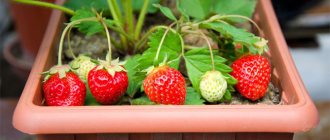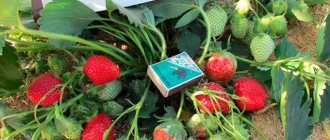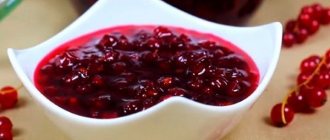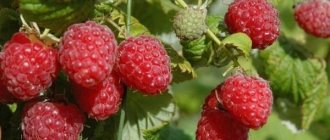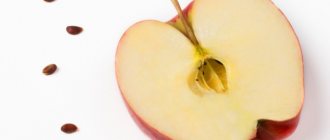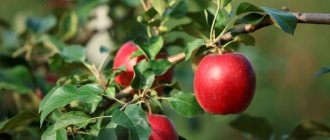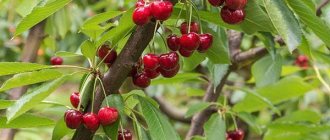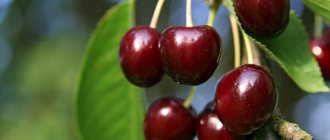Among all types of berries, strawberries hold a special place in the hearts of many people. The Vima Zant strawberry was developed in European countries and is still not as well known among Russians as its analogues. This is undeserved, because this berry, if you look at the photos and other information on the characteristics, is in no way inferior to the more well-known species bred artificially.
Description
Bushes
The bushes are of medium height, vertical type of growth, weakly leafy, with medium-sized leaves of soft green color. The petioles of the leaf blades are slightly pubescent and of medium length. The flowers are pale white, collected in large inflorescences. The variety is characterized by the formation of bisexual flowers, so Vima Zanta does not need to plant pollinators. The flower stalks are massive, located at the level of the leaves, and tend to lie down under the weight of the berries. The bevel formation is enhanced.
A characteristic feature of Vima Zanta strawberry bushes is curled leaves.
Berries
Vima Zanta berries are large, symmetrical, round in shape, orange-red in color with light juicy pulp. The taste of the fruit is richly sweet, with a strongly pronounced aroma (in rainy years there may be sourness). The surface of the berries is matte.
The berries are easily separated from the stalk, including the sepals, which negatively affects their keeping quality and transportability. After picking, most of the fruits are deformed. In addition, the variety is characterized by an empty middle of the fruit, which is also a disadvantage and makes growing the variety unsuitable for commercial purposes. Due to their delicate consistency, the berries are also unsuitable for freezing; after thawing, they turn into a shapeless mass.
Productivity
Vim Zanta begins to bear fruit at the beginning of June. More precise dates depend on climatic conditions and agricultural technology. Average yields are about 500 g of berries per plant.
Garden strawberries and strawberries: feel the difference!
The species Garden strawberry is also called Pineapple strawberry, from the Latin name Fragaria ananassa. Of course, this plant has nothing to do with pineapples. We owe its appearance to the process of free pollination between Chilean and Virginia strawberries. Today there are about 10 thousand varieties of garden strawberries, which are often mistakenly called strawberries.
Garden strawberries (pineapple)
Strawberries and garden strawberries are different species of the same botanical genus. It is impossible to find real strawberries on store shelves, and they grow in garden beds only among collectors and breeders. In nature, this plant grows in the southern regions of Russia, Europe and Central Asia. Strawberries have a number of significant differences from garden strawberries:
- Strawberries are much smaller, more rounded, and their color is closer to purple-crimson rather than red.
- The fruits and flowers of strawberries are carried on the shoots above the leaves, while those of strawberries are located below.
- Strawberry fruits are difficult to separate from the bracts.
- Strawberry flowers are dioecious, so very few fruits are formed on the bushes.
Read also: Planting strawberries in the fall: how and when to plant correctly
The taste and aroma of strawberries and wild strawberries are, as a rule, equally well expressed.
a brief description of
Advantages of the variety
- excellent winter hardiness;
- high resistance to pests and diseases (especially Verticillium wilt);
- excellent taste of berries;
- good yield.
Disadvantages of the variety
- absolutely unsuitable for transportation and freezing;
- susceptibility to powdery mildew;
- a very large number of mustaches;
- sour taste of fruits in rainy seasons.
Vima Zanta inherited excellent resistance to most berry diseases from her eminent parents. From Corona it is resistant to root rot, from Elsanta it is resistant to gray rot and spotting.
Advantages and disadvantages of the variety
This variety of strawberry has both its advantages and disadvantages. First, let's talk about the positive qualities of Wim Zant:
- The variety has quite good taste. The berries are juicy, soft, very sweet. Tasting score – 4.4 out of 5 points.
- This is a fairly high-yielding variety.
- The variety tolerates heat quite well.
- Has good frost resistance. Even without shelter, bushes can overwinter normally at a temperature of -22 degrees Celsius.
- Quite unpretentious in care.
However, it is worth noting a number of disadvantages of this variety. The main disadvantages of Dutch strawberries include:
- Weak transport qualities of strawberries. It wrinkles quickly during transportation.
- The fruits are poorly stored, which is why they need to be eaten immediately or processed.
- The variety produces a large number of runners, which creates additional problems when caring for strawberries.
Growing and care
The main feature of the agricultural technology of the Vima Zanta variety is sparse planting. Even with slight thickening, yield indicators are significantly reduced, and the berries become smaller. The optimal planting pattern is 30-40 cm between plants and at least 60 cm between rows. It is very important to ensure timely removal of the mustache. On average, they are pruned 3-4 times during the growing season. If pruning is not carried out in a timely manner, then most of the bush’s energy will be spent on them. As a result, there will be significantly fewer berries.
When growing Vima Zanta, it is important to follow the correct feeding schedule. Fertilizers are especially important during flowering and ovary formation.
When growing Vima Zant strawberries, the following fertilizer application scheme is most often used:
- Early spring, immediately after the snow melts - urea at the rate of 20 g per m2. Stimulates the growth of leaf mass.
- End of April – complex mineral mixture. You can use any mineral complex intended for berry crops. The application rate depends on the specific manufacturer.
- After flowering - organic. For example, mullein, chicken droppings or fermented nettle infusion. Before use, they must be diluted with water in a ratio of 1:10. You need to be especially careful when using chicken manure. A solution that is too concentrated can cause burns, so chicken manure is often diluted in a ratio of 1:20.
- End of September – phosphorus-potassium complex. The use of nitrogen fertilizers during this period is unacceptable. The excess growth of leaf mass provoked by them will significantly reduce winter hardiness.
Strawberry care
Caring for any variety of strawberry involves performing the same actions. However, there are still some nuances. When caring for the Vima Zanta hybrid, you need to take into account the characteristics of both parent varieties. This is the only way to achieve a good harvest. The rules for caring for the Vima Zanta variety require the following actions:
- The hybrid loves abundant watering so that the berries are full-bodied. You will have to do this often. Moreover, during flowering it is impossible for water to get on the flower stalks. Watering plants at the roots is difficult, especially on large plantations. The only way out of the situation can be the arrangement of drip irrigation.
- The bushes of the Vima Zant hybrid are powerful, but they may not survive in thickets of grass. Weeds pull a lot of nutrients from the soil. It is better to do weeding in a timely manner, preventing the appearance of grass.
- If you want to get an early harvest, you will have to work hard. In the long spring, frosts are often observed. To prevent them from destroying young shoots, strawberries are covered with agrofibre at night. Such actions will help you get the first ripe berries about 10 days earlier.
- The Vima Zanta strawberry is considered a winter-hardy hybrid, but there is a threat of freezing. In the absence of snow, severe frosts or frequent thaws with freezing of the soil, the root system of plants suffers. You can ensure reliable insulation by covering strawberries with mulch for the winter. Straw, leaves, sawdust and other natural waste are suitable. Agrofibre can be used as mulch for winter shelter.
- Mulch is useful not only in winter, but also during the growing season. It will prevent rapid evaporation of moisture, protect plants from pests, and will also serve as an additional organic fertilizer. Sometimes gardeners even use pine tree needles for mulch.
- Recently, the technology of growing strawberries on film has gained wide popularity. The bed is covered with a black cloth, and windows are cut with a knife in the places where the seedlings are planted. The film prevents moisture from evaporating from the soil and prevents the growth of weeds.
The mustaches are removed from the strawberries so that they do not weaken the mother bush. However, the plant needs to reproduce. To obtain young shoots, 2-3 whiskers are left, and the strongest ones are chosen, and all weak little things are cut off with scissors.
Advice! To cause less injury to strawberries, it is better to propagate the plant after the berry picking has been completed.
Reproduction
The Vima Zanta variety is very easy to propagate with the help of numerous tendrils. Whiskers or, in other words, daughter rosettes are formed throughout the growing season. On average, one well-developed mother bush can produce up to 15-20 young plants. Most of the mustaches are formed by 2-3 year old bushes. As we age, conformation gradually decreases.
The advantages of reproduction with a mustache include:
- Full preservation of varietal characteristics.
- Almost 100% survival rate.
- Ease of reproduction.
To obtain the maximum number of runners, all peduncles are removed from the selected plants. This allows you to get the maximum number of daughter sockets. July whiskers are best suited for propagation. They manage to take root well before the onset of frost and therefore overwinter with virtually no losses.
For reproduction, it is best to use first-order whiskers. If necessary, the others can be used, but they are usually much smaller and weaker. For faster rooting, selected shoots are pinned to the ground and lightly hilled. As soon as the mustache takes root and begins to grow, they begin to be planted.
The rooted mustache is dug up using a scoop or small spatula. The dug plant is transferred to a pre-prepared planting bed.
When planting young bushes, it is necessary to monitor the depth level of the growing point. It should be slightly above ground level. Excessive deepening or elevation of the heart will lead to the death of the bush.
After planting is completed, the bed is watered abundantly, and the soil surface is mulched with a layer of straw, peat or humus. To create greenhouse conditions, seedlings are covered with a layer of non-woven material. It effectively protects from the sun while maintaining a constant level of humidity.
How to choose a variety for growing in your garden?
When choosing a variety of garden strawberries for planting, you must first decide on the type of fruiting. Ordinary plants bloom and produce crops once per season. Remontant ones bear fruit throughout the entire growing season.
Having fresh berries on the table all summer is a tempting prospect. But remontant varieties, in addition to their advantages, also have some disadvantages:
Saving space on the site (there is no need to keep several varieties with different ripening periods)
Greater need for fertilizers and watering
Early aging of the bush associated with depletion of the plant’s generative resources
The second important point when choosing is the purpose of the fruit. You need to decide what the strawberries will be grown for: for fresh consumption, for canning or for sale.
Fragrant varieties
Among the varieties with excellent dessert taste and aroma one can note:
Berries for canning and freezing
Strawberries that will be used for canning or freezing should have a denser consistency. The following varieties are suitable for this purpose:
The best remontant varieties
It is better to buy remontant or photoneutral varieties for sale, which can produce the maximum yield. In addition, the fruits of such strawberries should be well stored and transportable. For example:
- Mara de Bois;
- Queen Elizabeth II;
- Diamond;
- Albion;
- Evi 2;
- Victoria.
Other factors that need to be taken into account when selecting a variety of garden strawberries are ease of care and resistance to weather conditions. If it is not possible to spend a lot of time in the beds and care for the bushes, preference should be given to beardless varieties. In regions with harsh winters, it is important to choose frost-resistant strawberries. In humid climates, resistance to fungal infections becomes a serious argument.
Pest protection
In some unfavorable years, Vima Zanta strawberries may suffer from attacks by harmful insects. The most common ones are described in detail below.
Strawberry whitefly
A very small sucking pest that feeds on the sap of young leaves. Butterflies lay eggs on the underside of leaf blades. They hatch into larvae, which cause the main damage. The whitefly overwinters in plant debris and upper layers of soil. Up to 4 generations of the pest can be hatched per season.
Systemic insecticides are used to kill whiteflies. For example, Aktara shows a good result. The treatment is carried out twice. The first time is before the beginning of the flowering period, the second time is after picking the berries.
Strawberry leaf beetle
Small brown beetles that feed on leaves. The female strawberry leaf beetle lays eggs on the underside of the leaf blades. After 2 weeks, the eggs hatch into larvae that immediately begin to feed on the leaves. When heavily infected, the bushes grow severely deformed, and the ovaries on them die without having time to fully develop.
Adult beetles overwinter in plant debris. Therefore, the most effective measure to combat the strawberry leaf beetle is the timely destruction of tops and weeds. Insecticides used are Shar Pei or Karate.
Raspberry-strawberry weevil
A small dark gray beetle. Damages mainly young leaves, buds and ovaries. A characteristic sign indicating the presence of the raspberry-strawberry weevil is peduncles without buds. After eating part of the buds, the females lay eggs in them. The hatched larvae gnaw out all the contents. As a result, the crop is almost completely destroyed. To destroy the raspberry-strawberry weevil, plants are treated with Karate, Actellik and similar insecticides.
Diseases and pests
In all descriptions, the variety is positioned as a crop that is extremely resistant to most fungal and viral diseases, as well as pests. But garden strawberries rarely grow in the garden in deep solitude, and in proximity to other plantings. Also, lack of care and weather conditions can play a negative role in the development of diseases. Therefore, it is worth taking the following preventive measures:
- Fight against the thickening of berry bushes, as poorly ventilated plantings can lead to the development of fungal diseases;
- Loosening and mulching also helps prevent diseases;
- Spraying the beds with an iodine solution (10 drops per 10-liter bucket of water) once every 10 days or a solution of mustard powder (100 g per 10-liter bucket of water) once every three days;
- Spraying with a solution of potassium permanganate (weak, light pink) to prevent powdery mildew.
The fight against diseases from the first signs of manifestation is expressed in the use of fungicidal drugs before the flowering stage.
With powdery mildew, in the flowering stage, it is allowed to use colloidal sulfur (50 g per 10 liter bucket of water with a 10% solution of karbofos). Apply twice every other day. You can read even more about this in the article Strawberry diseases and their treatment.
If pests prevail, then use the following methods:
- Spider mites are afraid of the warm rain of karbofos solution (3 tbsp per 10-liter bucket of water). The temperature of the solution must be at least +30°C. After treatment, cover the plantings with polyethylene for three hours;
- Mulch is an excellent way to protect berries from the invasion of slugs and snails;
- You can fight ants in the following simple way: dilute 2 cups of 9% vinegar, 1 cup of vegetable oil (sunflower) in a 10 liter bucket of warm water. Spray the bushes;
- A universal means of combating harmful insects and their larvae is the use of Bordeaux mixture. It can be used in a solution of no more than 5 g per 10-liter bucket of water and only until flower stalks appear.
Reviews
I grow 2 varieties of strawberries - Honey and Vima Zanta. The first one is larger-fruited and ripens about a week earlier. The second one is more tasty and aromatic. I have regular customers for Zanthu, who buy the berries only from me, for the unique caramel taste of the variety.
I brought the Vima Zanta variety to Novosibirsk from a relative living in Krasnodar. I tried her berries, they were sweet and aromatic, but I have a plastic taste, and there is no aroma either. Apparently, the variety does not grow on all soils and not in all climates.
Vima Zanta strawberries are considered the most delicious variety of the Vima line. It may be poorly suited for market sales, but for personal consumption it will be a worthy choice for any summer resident.
History of the variety
The Wima Zant strawberry variety was bred by Dutch breeders Vissers Aardbeiplanten BV for trade. Therefore, it is more correct to simply call strawberries “Zanta”.
The variety was included in the State Register of Plants of Russia relatively recently: in 2022.
Note: The variety was included in the register of Belarus in 2002, of Ukraine - in 2013.
Parent varieties of strawberries Vima Zanta - Corona and Elsanta

